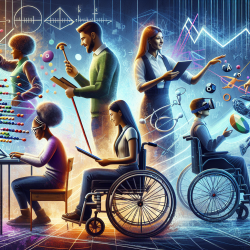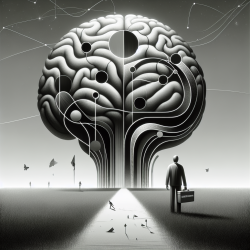Introduction
In a rapidly evolving digital world, the integration of technology in education is not just beneficial but essential, especially for students with disabilities. A recent study titled "A content analysis of research on technology use for teaching mathematics to students with disabilities: word networks and topic modeling" sheds light on the trends and effectiveness of various technological tools in mathematics instruction for these students. This blog explores the findings and implications of this research, offering insights for practitioners aiming to enhance their instructional strategies.
Key Findings from the Research
The study analyzed 488 studies published between 1980 and 2021, employing word networks and structural topic modeling to identify trends in the use of technology for teaching mathematics to students with disabilities. Here are some of the significant findings:
- Centrality of Technology: The terms "computer" and "computer-assisted instruction" were central in the 1980s and 1990s, while "learning disability" gained prominence in the 2000s and 2010s.
- Emerging Trends: Topics like visual materials, robotics, and word problem-solving instruction have shown increasing trends since 1990, with significant growth in instructional sequence topics over the past decade.
- Technological Tools: Tools such as virtual manipulatives, augmented reality, and educational games have been increasingly used, demonstrating positive outcomes in mathematics instruction for students with disabilities.
Implications for Practitioners
For educators and therapists, the findings offer valuable insights into effective strategies and tools for teaching mathematics to students with disabilities:
- Incorporate Visual and Interactive Tools: Utilize virtual manipulatives and augmented reality to create engaging and accessible learning experiences.
- Focus on Instructional Sequences: Implement structured instructional sequences that incorporate evidence-based practices to enhance learning outcomes.
- Leverage Technology for Diverse Needs: Use technology to address diverse learning needs, ensuring inclusivity and accessibility in mathematics education.
Encouraging Further Research
While the study provides a comprehensive overview of trends, it also highlights areas for further research. Practitioners are encouraged to explore the following:
- Innovative Technologies: Investigate the potential of emerging technologies like artificial intelligence and machine learning in mathematics instruction.
- Diverse Disability Types: Conduct research focusing on other disability types beyond learning disabilities to develop targeted interventions.
- Longitudinal Studies: Implement long-term studies to assess the sustained impact of technological interventions on mathematics achievement.
Conclusion
The integration of technology in teaching mathematics to students with disabilities is not just a trend but a transformative approach that can significantly enhance learning outcomes. By leveraging the insights from this research, practitioners can adopt data-driven strategies to create inclusive and effective educational environments.
To read the original research paper, please follow this link: A content analysis of research on technology use for teaching mathematics to students with disabilities: word networks and topic modeling.










